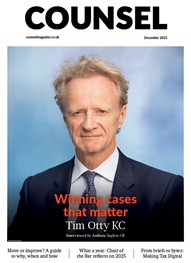*/
Edited by Chris Miele
Merrell Publishers; Hardback (April 2010); £35
ISBN: 1858945070
This book is one of the best things to come out of the transformation of the Middlesex Guildhall from a Crown Court into the Supreme Court. Lavishly illustrated with superb photographs, plans and drawings, it is also a wonderful read. There are eight essays from, amongst others, Lady Hale, Lord Bingham, and top notch art and architectural historians. Together they explain the judicial functions of the House of Lords leading to the creation of the Supreme Court, the history of the building and its predecessors on this site, the architecture of the present Guildhall together with its glorious decorative arts and sculpture inside and out, and the iconography of supreme courts in the common law world which over the decades has moved from imperial grandeur to glass box transparency.
There is also a fascinating history of Parliament Square itself through the centuries as it accidentally turned into a “traffic island laid out to display sculpture”. The present Mayor of London has shelved plans to turn this “a green glade of heroes into a vast, blasted chewing gummed piazza”.
Hugh Fielden, architect for the Supreme Court project, describes clearly how the team went about their task including their battles with the conservationists. Readers will decide whether they agree that “the cultural significance of the new Supreme Court outweighed the significance of the historic courtroom furniture”. This has largely been moved or dispersed in order to create the sort of court rooms which were deemed suitable for their new occupants.
The last word goes to HH Fabyan Evans, the penultimate presiding judge of Middlesex Crown Court, who describes the lost world of the 20th Century criminal practitioner before poignantly summing up the feelings of those who used and loved the building. He and Lord Bingham in particular know how not to waste a word in what they say. It doubtless was a particular challenge to edit eight such well qualified authors but there is the slight irritation that sometimes the same insight winds up being repeated by someone else in another chapter. The only thing missing is what it has been like to use the building.
There is also a fascinating history of Parliament Square itself through the centuries as it accidentally turned into a “traffic island laid out to display sculpture”. The present Mayor of London has shelved plans to turn this “a green glade of heroes into a vast, blasted chewing gummed piazza”.
Hugh Fielden, architect for the Supreme Court project, describes clearly how the team went about their task including their battles with the conservationists. Readers will decide whether they agree that “the cultural significance of the new Supreme Court outweighed the significance of the historic courtroom furniture”. This has largely been moved or dispersed in order to create the sort of court rooms which were deemed suitable for their new occupants.
The last word goes to HH Fabyan Evans, the penultimate presiding judge of Middlesex Crown Court, who describes the lost world of the 20th Century criminal practitioner before poignantly summing up the feelings of those who used and loved the building. He and Lord Bingham in particular know how not to waste a word in what they say. It doubtless was a particular challenge to edit eight such well qualified authors but there is the slight irritation that sometimes the same insight winds up being repeated by someone else in another chapter. The only thing missing is what it has been like to use the building.
Edited by Chris Miele
Merrell Publishers; Hardback (April 2010); £35
ISBN: 1858945070
This book is one of the best things to come out of the transformation of the Middlesex Guildhall from a Crown Court into the Supreme Court. Lavishly illustrated with superb photographs, plans and drawings, it is also a wonderful read. There are eight essays from, amongst others, Lady Hale, Lord Bingham, and top notch art and architectural historians. Together they explain the judicial functions of the House of Lords leading to the creation of the Supreme Court, the history of the building and its predecessors on this site, the architecture of the present Guildhall together with its glorious decorative arts and sculpture inside and out, and the iconography of supreme courts in the common law world which over the decades has moved from imperial grandeur to glass box transparency.


Chair of the Bar reflects on 2025
Q&A with criminal barrister Nick Murphy, who moved to New Park Court Chambers on the North Eastern Circuit in search of a better work-life balance
Revolt Cycling in Holborn, London’s first sustainable fitness studio, invites barristers to join the revolution – turning pedal power into clean energy
Rachel Davenport, Co-founder and Director at AlphaBiolabs, reflects on how the company’s Giving Back ethos continues to make a difference to communities across the UK
By Marie Law, Director of Toxicology at AlphaBiolabs
AlphaBiolabs has made a £500 donation to Sean’s Place, a men’s mental health charity based in Sefton, as part of its ongoing Giving Back initiative
Little has changed since Burns v Burns . Cohabiting couples deserve better than to be left on the blasted heath with the existing witch’s brew for another four decades, argues Christopher Stirling
Six months of court observation at the Old Bailey: APPEAL’s Dr Nisha Waller and Tehreem Sultan report their findings on prosecution practices under joint enterprise
Despite its prevalence, autism spectrum disorder remains poorly understood in the criminal justice system. Does Alex Henry’s joint enterprise conviction expose the need to audit prisons? asks Dr Felicity Gerry KC
With automation now deeply embedded in the Department for Work Pensions, Alexander McColl and Alexa Thompson review what we know, what we don’t and avenues for legal challenge
Why were some Caribbean nations given such dramatically different constitutional frameworks when they gained independence from the UK? Dr Leonardo Raznovich examines the controversial savings clause